Interactive installation. Smithsonian's Hirshhorn Museum and Sculpture Garden, Washignton DC, US. 2023.

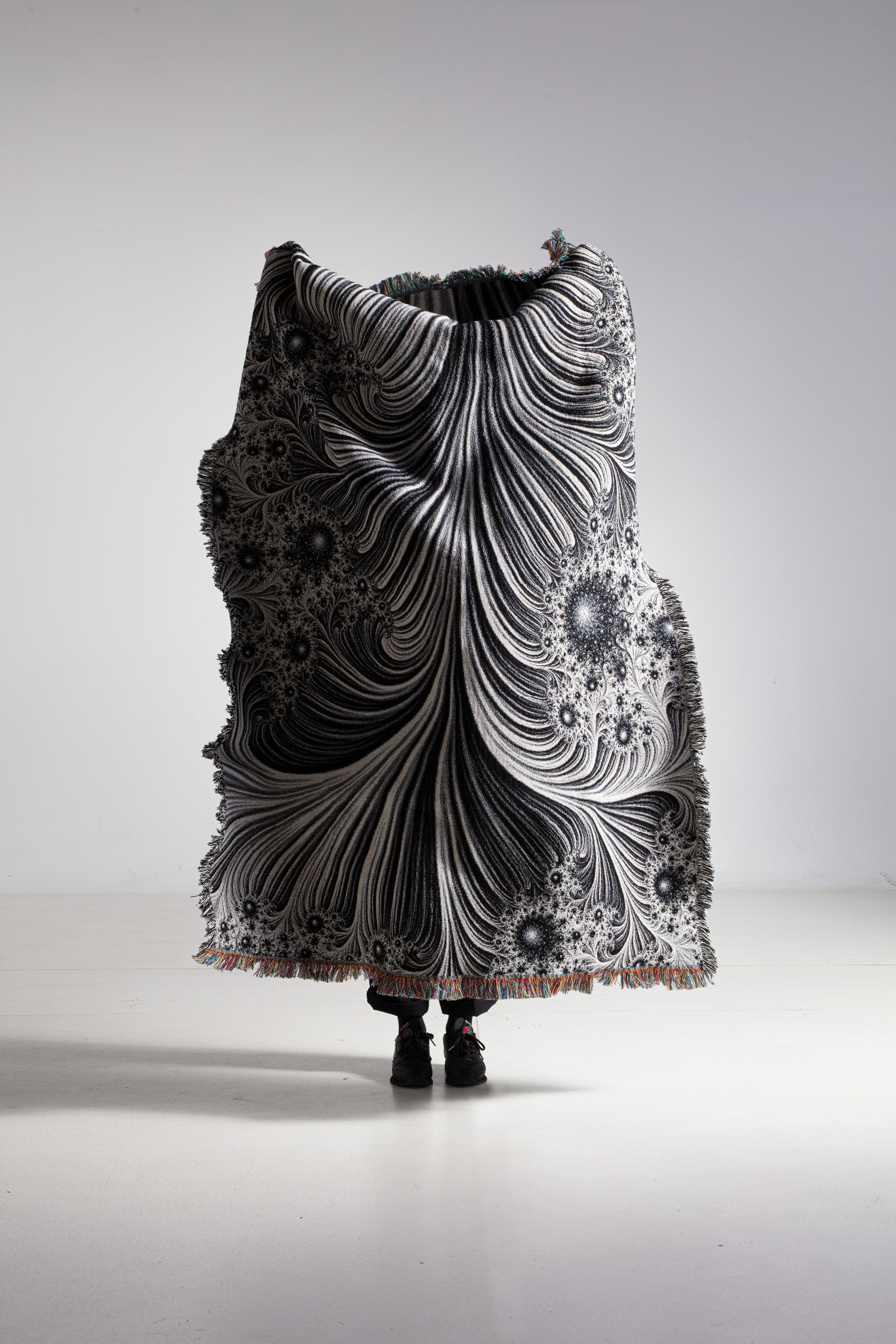
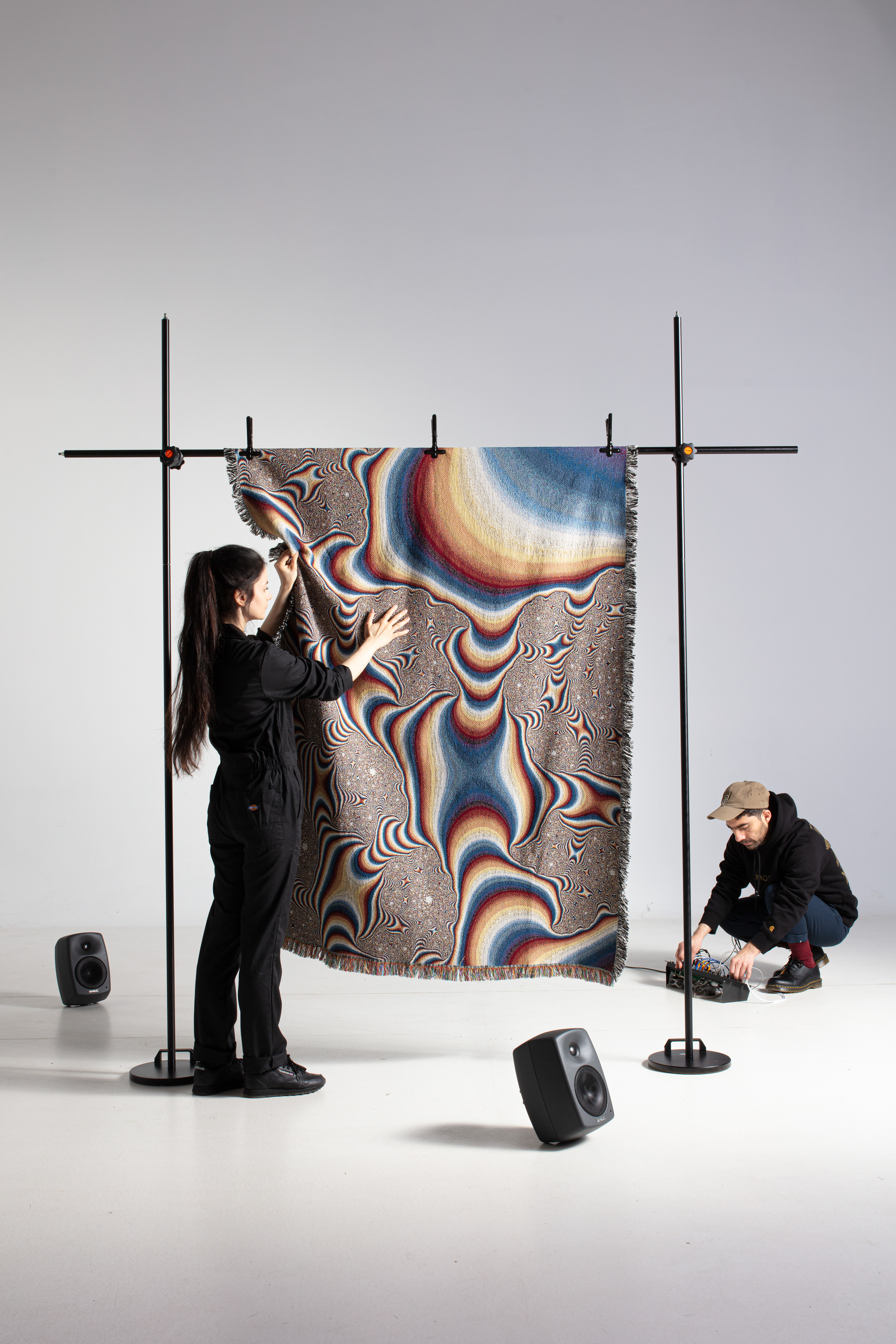
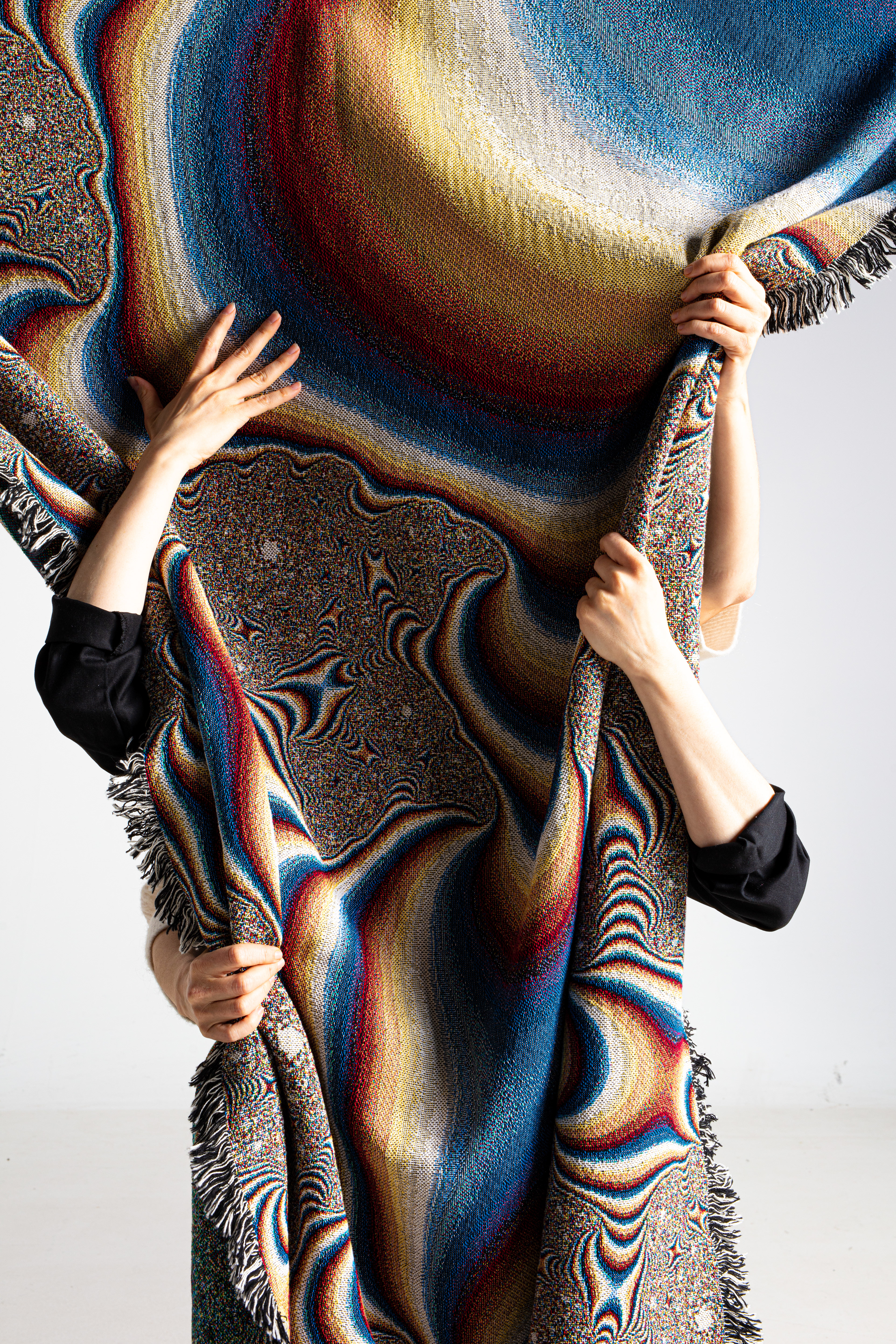

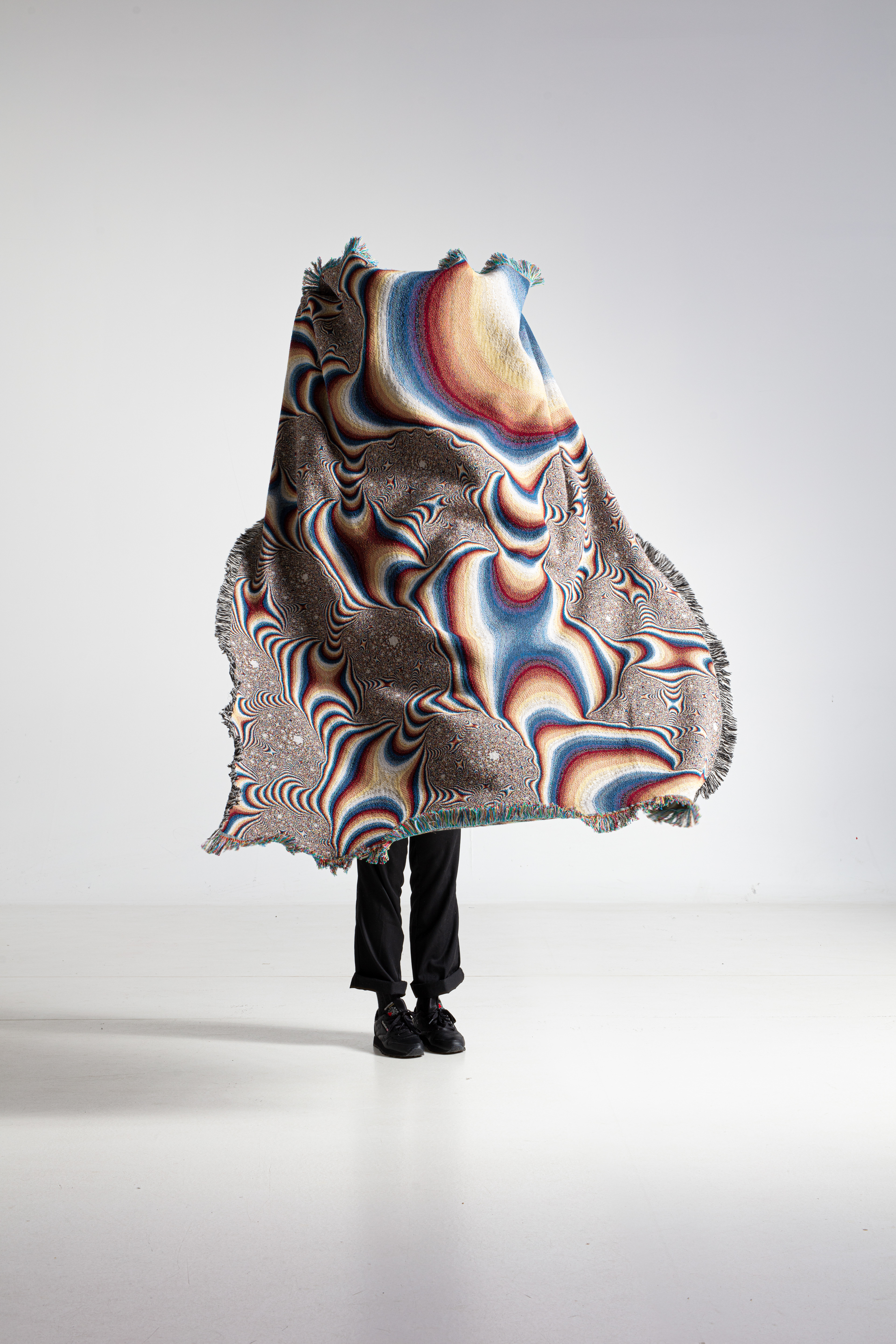
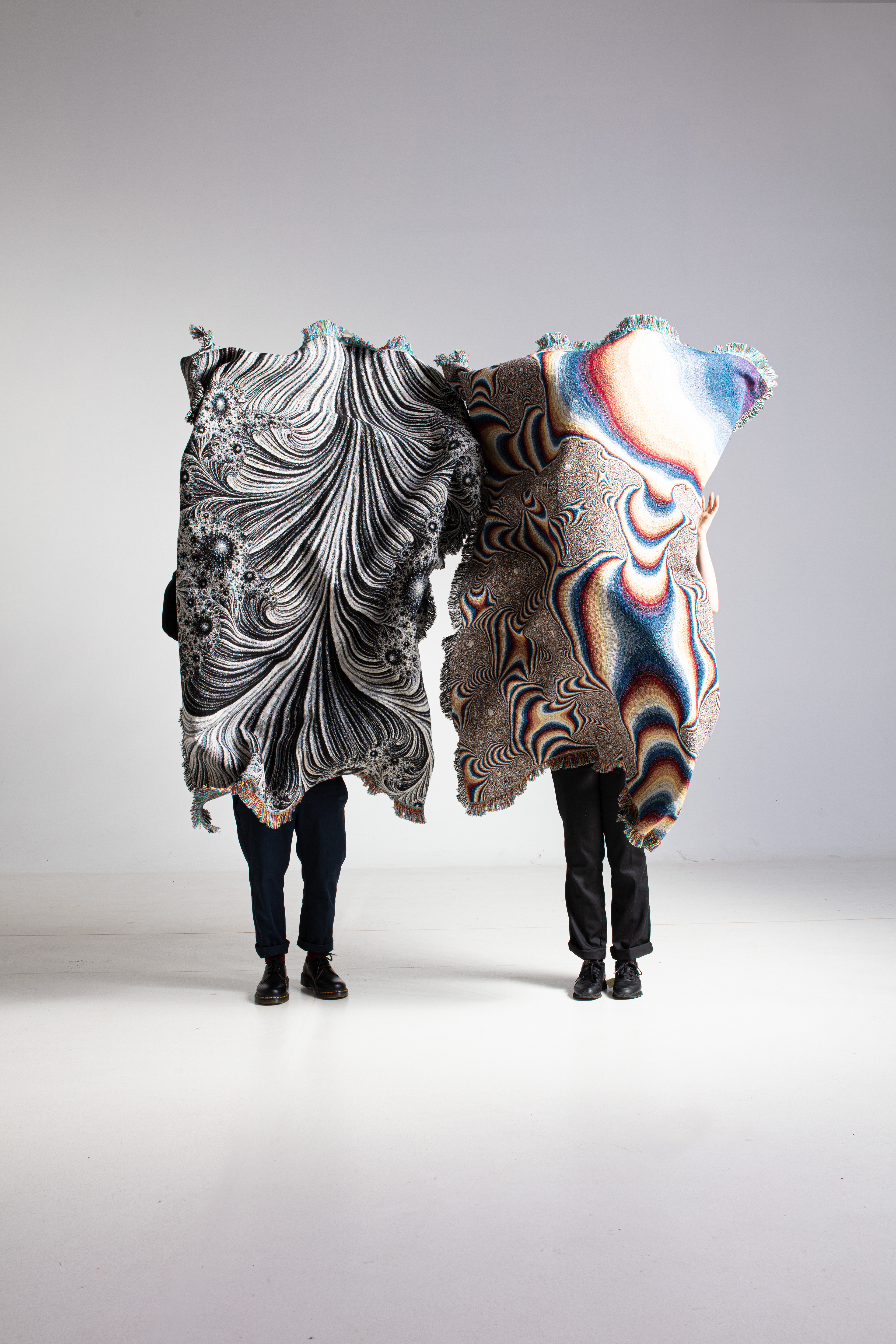
While the concept of fractals and the thought of recursiveness in infinite scale has existed since the dawn of humanity, it was not until the silicon chip was developed in the 1980s which allowed for the heavy computation to visualize, prove, and manifest such theories.
Through the evolution of the cosmos, we are the story of matter being told to itself. Growth and pattern are innate in matter. Without a designer, matter continuously shapes itself into the infinite fractal tapestry of our universe - every pebble, every mountain, every life.
Textiles as the metaphor that strings together the macrocosm and microcosm, the interwoven reflection of interpersonal relationships, the linking of vertices and edges to create a network, our second skin and the next interface for human-computer interactions.
Dung Dkar Cloak is a soft interface specifically created for intuitive musical interactions. It is a fractal tapestry augmented in order to create an intimate explorative material experience. Developed at the Material Research Hub within the Moholy-Nagy University of Art and Design.
Individual Note on "After The End" (Sound Scene 2023) -
Where there is no beginning, there is no end.
While the concept of fractals and the thought of recursiveness in varying scale has existed since the dawn of humanity, it was not until the silicon chip was developed in the 1980s which allowed for the heavy computation to visualize, prove, and manifest such theories.
Through the evolution of the cosmos, we are the story of matter being told to itself in infinite permutations. Growth, pattern, and life are innate to matter itself. Without a designer, matter continuously shapes itself into the infinite fractal tapestry of our universe - every pebble, every mountain, every life.
Textiles as the metaphor that strings together the macrocosm and microcosm, the interwoven reflection of interpersonal relationships, the linking of vertices and edges to create a network, our second skin and the next interface for human-computer interactions.
Where does one end, and another begin?
Predominant outdated thought has been very much based on the segmentation and rigid differentiation of individuals, inciting alienation and a sense of infinite distance between each other. Arguably, since the Gutenberg revolution, the sense of sight has overpowered our experience and connection to the world and one another. While looking is an amazing experience, it also empowers the feeling of distance between the self and everything else, “I am looking at that. I am not that. I sense a distance between subject and object, hence it is not part of me.” Our experience of reality and who we are is much more intricate and interconnected.
In social sciences literature, a textile vocabulary has been found to be the most accurate and descriptive when trying to express the multisensory character of our lived experience. Michael Serres depicts “tissue, textile and fabric” as “excellent models of knowledge”, whereby knowledge can be understood as a perceptual experience. “The sensible, in general, holds together all senses, all directions, like a knot or general intersection. On these ideas, David Howes, anthropologist and sense guru, reflects and “no matter how prominent or engrossing one strand of perception may appear, it is still knotted into the fibres of our multisensory experience.”
Whilst there is no end, paradoxically we are living in a perpetual new beginning. Each new instant is botórthed by our thoughts and actions in the previous one. We propose a new now created not only through our scientific intellect, but through an intuitive embodied experience. It is fundamental to how we experience and know ourselves, others and the world, and can be central to how we communicate and build after the end.